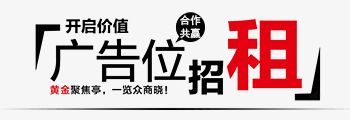2022 Forbes Blockchain 50: A Closer Look
Content
Korean leaders Samsung and Kakao along with Japanese firms Fujitsu and Line Corporation roundup this growing Asian contingent. We are also exploring use cases for blockchain that begin to improve the driver experience. Despite our advances in manufacturing and supply chain, selling or renting cars to consumers is still a fraught, paper-laden process. We recently partnered with the German government to use blockchain as a means of federating driver’s licenses and simplifying the purchase process. Self-sovereign identity allows German citizens to verify their https://www.xcritical.com/ licenses frequently with ride-sharing or insurance companies with minimal friction and maximal security, while providing sellers an easy way to reduce identity fraud.
Blockchain outlook 2022: Is bitcoin in a bear market?
We can expect blockchains to integrate third party apps that enable identity verification into their smart contracts. We already have applications Non-fungible token on chains like Polygon and Terra that use digital identity verification applications like Synaps that link users’ verified ID’s to their wallets and store them in a decentralized manner. The continued growth of the digital assets space over 2021 has left little doubt that the overall trend towards greater adoption of cryptocurrencies and decentralised systems is very much intact in spite of the growing pains.
Major Blockchain Trends for 2022
The luxury watchmaker now tracks 320,000 timepieces on the blockchain, giving customers blockchain industry trends access to detailed product history and proof of authenticity. Like consulting Carfax before purchasing a Toyota, you can easily check out the number of previous owners and repair history. In February, Breitling will let European owners buy, sell or trade timepieces online; it already allows customers to trade in old watches for store credit.
Polyhedra: The future of intelligence

For example, distillers William Grant and Son sold bottles of 46-year-old Glenfiddich whiskey with NFTs for authenticating the provenance of each bottle. As a result of volatile market movements, UST (Terra stablecoin) had two hiccups in 2021. Eventually, the team at Terra was able to collect enough liquidity by connecting with blockchains such as Solana and Cosmos. There already exists a crypto futures ETF and in 2022 we could see the introduction of a crypto spot ETF as well. Currently proceedings are ongoing with the SEC for an introduction of a crypto spot ETF on the Arca exchange, a subsidiary of the NYSE.
Top blockchain trends to watch in 2022 and beyond - Part 1
However, guild management for NFTs that have a short spike and a quick fall in value leads to treasury management difficulties such as how to allocate funds accordingly. Software management systems around guild management will be an interesting topic for 2022.
Started in 2018 by Coinbase cofounder Fred Ehrsam and former Sequoia Capital partner Matt Huang, Paradigm has quickly become one of the most prominent crypto VC firms. Investments ranging from $1 million to over $100 million include FTX, Coinbase, Chainalysis, Uniswap and Sky Mavis. In November, Paradigm announced a new $2.5 billion fund, the largest crypto-centric venture capital fund ever. The contracts, stored on the Atomyze blockchain, help industrial firms like Umicore, Traxys and Glencore track the origin and environmental bona fides of their metals and make it easier to adjust inventory levels. Enterprise software provider MicroStrategy and its crypto-Kool-Aid-guzzling CEO, Michael Saylor, are corporate America’s biggest bitcoin owners. The D.C.-area firm, which nominally makes boring back-office business software, has transformed itself during the pandemic into a crypto trading powerhouse.
Filali assembled an internal team who understood blockchain and its potential impact, including people from the legal, IT, and finance units, and began implementing solutions. Her team and their extended network are now able to develop in-house blockchain products, consult with regulators, and guide other public institutions in adopting blockchain. Their work has led to partnering with the EU Blockchain Observatory and Forum, and Filali chairing the board of INATBA, the International Association for Trusted Blockchain Applications, since April 2021. In order to gain significant institutional adoption, more on-chain regulation, legal technology frameworks and identity innovation need to happen. Governments’ focus will shift towards more measurements around on-chain activity such as KYC measurements for decentralized applications that let regulators track on-chain verified identities.
Therefore, Ethereum would continue experimenting with efforts to increase scalability throughout 2022. For example, the Polygon network, alongside experiments with layer 2 technologies, would stand strong as the top blockchain trends in the coming years. However, the popularity of Ethereum actually turned out to be a huge setback for the network. As a matter of fact, Ethereum emerging as a top platform for dApps development served as one of the biggest blockchain trends in the past years. The trending phenomenon invited everyone to Ethereum to build decentralized applications, ultimately congesting the network.
- The intraday repo application has so far facilitated the movement of $230 billion in trades, completing about $1 billion in transactions a day.
- For example, blockchain technology can help in ensuring the consistent storage of vaccine batches at the right temperature.
- Though DAOs that allow people to pool and invest their money are gaining popularity they are not new.
- Multi-Party Computation (MPC) offers a way to train AI on decentralized data while keeping it private and secure.
- While the UK government-endorsed Britcoin is unlikely to be ready for launch during 2022, others, including China, Singapore, Tunisia, and Ecuador, have already done so, with more, including Japan, Russia, Sweden, and Estonia likely to join soon.
- There are already protocols like the Astra Protocol equip smart contracts with a decentralized compliance layer to satisfy dispute resolution and KYC issues.
Projects like Forta that allows centralized apps to trace the security and Nexus Mutual that facilitates smart contract-based insurance will conitnue to attract more customers. In the technological era where going digital is the need of the hour, security is a major concern. The situation becomes more complex when it comes to the field of Decentralized Finance or DeFi. The concept has emerged as a trusted and safe way to unleash the potential of digital economy.
Trendy cryptocurrencies and nonfungible tokens (NFTs) capture media headlines and the public imagination, but these and other blockchain and distributed ledger technologies (DLTs) are also making waves in the enterprise. Projects for developing national currencies generally focus on digital currencies, which can work alongside the existing traditional currencies. Therefore, the trends in blockchain could enable users to carry out financial transactions and manage the custody of their assets. Interestingly, users don’t have to rely on third-party providers, and central banks could also exercise control over the circulating supply. 2021 sparked the first debates about what the difference is between a Web3 project and a blockchain project/program/ protocol. A blockchain company should interact at least with one blockchain, in order to be considered blockchain-native.
This expands on Boeing’s earlier blockchain initiative with Honeywell’s GoDirect Trade platform, which in 2020 securely sold $1 billion in Boeing aircraft parts. In time they envision a global airworthiness records platform, which could save 25% in maintenance costs—worth billions annually across the industry. The $137 billion (sales) Blue Cross Blue Shield licensee is testing the blockchain to try to speed up an arcane administrative process known as “coordination of benefits,” which determines one’s primary insurer. It usually requires a series of faxes (yes! faxes!) and phone calls and can take up to three months. Through a shared ledger with Chicago-based Health Care Service Corporation for certain Medicaid members in Texas, the companies now make this determination in minutes or hours. Anthem’s blockchain program processes around 3,000 to 5,000 verifications a month.
Blockchain is now at a point where large corporations and governments, not just a tiny hyper-technical community of IT experts, are starting to comprehend its potential in terms of improving people’s lives and building more resilient organizations. As a result, businesses need blockchain experts who can assist them in applying blockchain technology to meet their business goals. One of the latest highlights of the latest blockchain trends refers to the shift of blockchain from a startup-level technology to enterprise technology. As many enterprises are excited to adopt blockchain technology in their systems and processes, they want to figure out the regulatory implications of their choices. The network congestion resulted in higher transaction fees and longer waiting times for developers.

Cryptocurrency trends suggest that Blockchain has already become the potential technology that can ensure the transformation of digital rights management. It can help in the reduction of Identity theft and also with supply chain management. Beyond the art world, sports memorabilia, ticketing, medicine, and even music have all provided additional scope for NFT expansion.





:quality(70)/cloudfront-eu-central-1.images.arcpublishing.com/xlmedia/EURFMOSBYBFXRANTOU67KVTT4I.jpg&h=300&w=450&zc=1)




2022 Forbes Blockchain 50: A Closer Look:等您坐沙发呢!